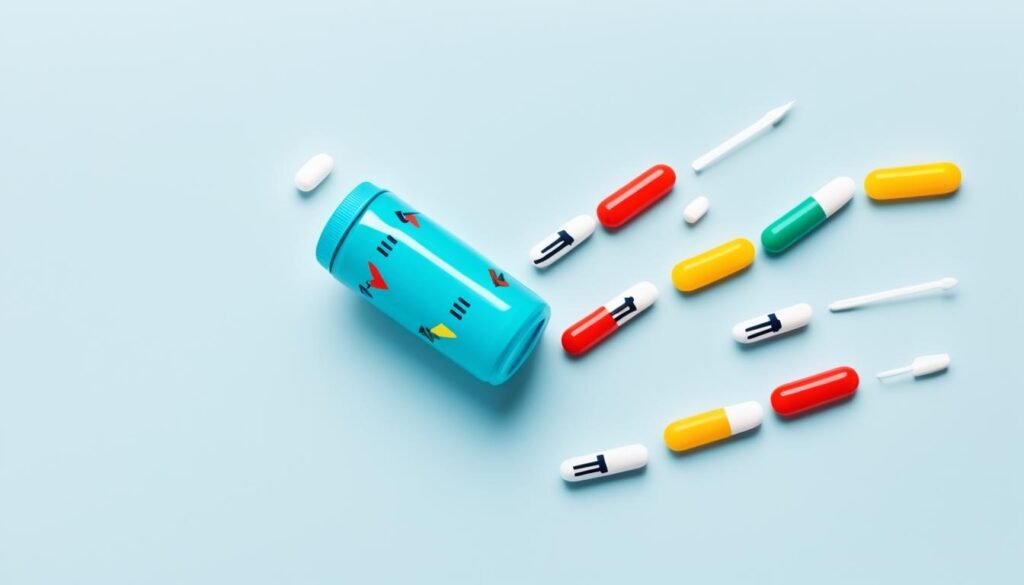Can You Get HIV From a Blowjob?
0Did you know that HIV can be transmitted through oral sex? While the risk is relatively low, it’s important to understand the potential for transmission and take appropriate precautions. Delicate mucous membranes in the mouth, vagina, rectum, and urethra can provide entry points for the virus. If a person performing oral sex has bleeding gums, cuts, or ulcers in their mouth, HIV could enter their bloodstream through infected fluids. Similarly, a person with HIV can transmit the virus to their partner during oral sex if infected fluids come into contact with the partner’s vagina, rectum, or urethra.
Reducing the risk of HIV transmission during oral sex involves understanding the factors involved and taking necessary precautions. By practicing safe oral sex and being informed, you can protect yourself and your partner. Let’s delve deeper into the topic and explore the various aspects of HIV transmission through oral sex, including the risks, precautions, and resources for more information.
Key Takeaways:
- HIV can be transmitted through oral sex, though the risk is relatively low compared to other forms of sexual activity.
- Mucous membranes in the mouth, vagina, rectum, and urethra can provide entry points for the virus.
- Using a barrier, such as a condom or dental dam, can help reduce the risk of HIV transmission.
- Other sexually transmitted infections (STIs) can still be transmitted through oral sex, so it’s important to take precautions.
- Medications, such as pre-exposure prophylaxis (PrEP) and antiretroviral therapy (ART), can further reduce the risk of HIV transmission during oral sex.
HIV Transmission and Risk Factors
HIV is primarily transmitted through various bodily fluids, including seminal fluid, vaginal fluids (including menstrual fluids), breast milk, blood, rectal mucous, and pre-cum. It is important to note that other bodily fluids, such as saliva, sweat, and urine, do not contain enough of the virus to infect another person.
When it comes to sexual activities, the risk of HIV transmission through oral sex is relatively low compared to anal or vaginal sex. However, certain factors can increase the risk:
- The presence of sores or bleeding gums in the person performing oral sex, providing an entry point for the virus into the bloodstream.
- Oral contact with menstrual blood, which can contain the virus if the partner is HIV-positive.
- The presence of other sexually transmitted diseases (STDs), which can increase the likelihood of HIV transmission during oral sex.
It’s important to understand these risk factors and take the necessary precautions to reduce the risk of HIV transmission during oral sex.
While the risk of HIV transmission through oral sex is relatively low, it is crucial to remember that prevention is always better than cure. Taking precautions and practicing safe oral sex can significantly reduce the risk of HIV transmission and protect your sexual health.
To provide a clear understanding of the risk factors associated with HIV transmission, here is a table summarizing the fluids that can and cannot transmit HIV:
| Fluids that can transmit HIV | Fluids that cannot transmit HIV |
|---|---|
| Seminal fluid | Saliva |
| Vaginal fluids (including menstrual fluids) | Sweat |
| Breast milk | Urine |
| Blood | |
| Rectal mucous | |
| Pre-cum |
Risks of Other Infections
While the risk of HIV transmission through oral sex is low, it is important to note that other sexually transmitted infections (STIs) can still be transmitted through this activity. STDs such as syphilis, herpes, gonorrhea, and chlamydia can be transmitted during oral sex. Anilingus, which involves oral-anal contact, can also transmit hepatitis A and B, as well as bacteria and parasites that may reside in the anus. It is important to take precautions and practice safe oral sex to reduce the risk of these infections.
During oral sex, the exchange of bodily fluids and direct contact with mucous membranes can facilitate the transmission of various STIs. Syphilis, caused by the bacterium Treponema pallidum, can be transmitted through oral sex if there are open sores or lesions in the mouth or on the genitals. Similarly, herpes, caused by the herpes simplex virus (HSV), can be transmitted through oral-genital contact if there are active herpes sores or blisters present.
Gonorrhea and chlamydia, both caused by bacterial infections, can also be transmitted during oral sex. These infections can affect the throat and cause symptoms such as sore throat, difficulty swallowing, or swollen lymph nodes. It is essential to get tested regularly for STIs and seek medical treatment if symptoms occur.
Furthermore, anilingus, which involves oral stimulation of the anus, carries additional risks. Hepatitis A and B can be transmitted through contact with infected fecal matter during anilingus. Hepatitis A is a viral infection that affects the liver and can cause flu-like symptoms, while hepatitis B is a viral infection that can result in long-term liver damage.
To protect against these risks, it is crucial to practice safe oral sex. Using barriers such as dental dams or condoms can help reduce the likelihood of transmission. Dental dams are thin latex or polyurethane sheets that can be placed over the vagina or anus, creating a barrier between the mouth and the genitals. Similarly, condoms can be used to cover the penis during oral sex, providing protection against STIs.
Frequent testing for STIs, including HIV, is also vital. Regular testing allows for early detection and treatment, reducing the risk of complications and further transmission. Additionally, open communication with sexual partners about STI status and testing can help ensure that both individuals are aware of and managing their risk.
Remember, practicing safe oral sex and getting tested regularly are key steps in protecting your sexual health and preventing the transmission of STIs.
Reducing the Risk of HIV Transmission
Individuals can take certain precautions to further reduce the already low risk of HIV transmission during oral sex. By implementing these measures, the chances of transmitting the virus can be significantly minimized.
Preventing Ejaculation in the Mouth
One approach to reducing HIV transmission risk during oral sex is to prevent male partners from ejaculating in the mouth. This can be done by either removing the mouth from the penis before ejaculation or by using a condom.
Using a condom during oral sex creates a barrier that helps prevent direct contact between infected fluids and mucous membranes inside the mouth. Condoms are a reliable method of protection and are easily accessible, making them an effective tool in reducing the risk of HIV transmission.
Using Barriers, such as Dental Dams or Cut Latex Condoms
Another effective measure in minimizing the risk of HIV transmission during oral sex is to use a barrier. Dental dams or cut latex condoms can act as physical barriers between the mouth and the genital area, reducing the likelihood of exposure to infected fluids.
A dental dam is a thin latex or polyurethane sheet that is placed over the vulva or anus to provide a barrier during oral sex. It can be easily purchased from drugstores or online. Similarly, a cut latex condom can be used as a dental dam by cutting open the condom and laying it flat over the genital area.
Using barriers such as dental dams or cut latex condoms not only helps reduce the risk of HIV transmission but also provides protection against other sexually transmitted diseases (STDs) and hepatitis.
Ensuring Barrier Integrity and Avoiding Oil-Based Lubricants
When using barriers during oral sex, it is essential to ensure their integrity. Using a new barrier for each oral sex encounter is crucial, as expired or damaged barriers may not provide adequate protection.
It is also important to avoid the use of oil-based lubricants on condoms or dental dams. Oil-based lubricants can weaken latex barriers, increasing the risk of breakage and rendering them ineffective in preventing HIV transmission.
Key Points:
- Prevent ejaculation in the mouth by removing the mouth from the penis before ejaculation or using a condom.
- Use dental dams or cut latex condoms as physical barriers between the mouth and genitals.
- Ensure the integrity of barriers and avoid oil-based lubricants.
Medications to Reduce Transmission Risk

The risk of HIV transmission through oral sex can be further reduced by taking certain medications. For the HIV-negative partner, pre-exposure prophylaxis (PrEP) is available as a preventive measure. PrEP is a medication taken daily that significantly lowers the risk of acquiring HIV. It works by preventing the virus from establishing an infection in the body. It is important to consult with a healthcare provider to assess eligibility and determine the most suitable PrEP option.
In addition, antiretroviral therapy (ART) is highly effective in reducing the risk of HIV transmission when taken by the HIV-positive partner. ART helps to control the virus, reduce its replication, and maintain low levels of the virus in the bloodstream. When the viral load is undetectable, the risk of transmitting HIV is effectively eliminated. Regular medical check-ups and adherence to prescribed medications are crucial for achieving and maintaining viral suppression.
“PrEP and ART are powerful tools in the fight against HIV transmission. When used correctly, these medications can significantly reduce the risk of HIV transmission during oral sex and other forms of sexual activity.”
– Dr. Sarah Thompson, Infectious Disease Specialist
It is important to note that PrEP and ART do not protect against other sexually transmitted infections (STIs). Therefore, it is recommended to combine medication-based prevention strategies with other safe sex practices, such as using barriers like condoms or dental dams, and regular testing for STIs.
| Medication | Usage | Effectiveness in Reducing Transmission Risk |
|---|---|---|
| Pre-exposure prophylaxis (PrEP) | Taken daily by HIV-negative individuals | Significantly reduces the risk of acquiring HIV |
| Antiretroviral therapy (ART) | Taken daily by HIV-positive individuals | When viral load is undetectable, risk of transmitting HIV is effectively eliminated |
It is crucial to consult with a healthcare provider to discuss the most suitable medication options, assess eligibility, and receive proper guidance on proper usage and adherence. These medications can play a vital role in reducing the risk of HIV transmission during oral sex and promoting overall sexual health.
Precautions and Safe Practices during Oral Sex
To lower the risk of HIV transmission during oral sex, it is important to practice certain precautions.
- Avoid brushing your teeth immediately before oral sex: Brushing or flossing right before engaging in oral sex can potentially lead to bleeding gums. This can increase the risk of HIV transmission if there are open sores or cuts in the mouth.
- Avoid oral sex during times of increased risk: If there are visible sores, infections, or known sexually transmitted infections (STIs) present in the mouth, gums, genitals, or anus, it is advisable to avoid oral sex. These conditions can increase the risk of transmitting or acquiring HIV and other STIs.
- Use a condom or dental dam as a barrier: Using a barrier method, such as a condom or dental dam, can help reduce the risk of HIV transmission during oral sex. Ensure that the barrier is intact and in-date before use, replacing it for each sexual encounter.
- Avoid oil-based products on condoms or dental dams: Oil-based lubricants can weaken latex condoms or dental dams, increasing the likelihood of breakage. Opt for water-based or silicone-based lubricants instead.
It is important to note that during menstruation, the HIV virus can be present in menstrual blood. Using a barrier method, such as a dental dam, can provide additional protection during oral sex in these circumstances.
Communication with HIV-Positive Partners

If engaging in oral sex with an HIV-positive partner, communication and knowledge of their treatment status is crucial. It is important to have open and honest conversations about treatment and prevention strategies to ensure the safety of both individuals.
“By openly discussing your partner’s HIV treatment and viral suppression, you can make informed decisions about engaging in oral sex and reduce the risk of transmission.”
When an HIV-positive partner is actively taking medications to treat HIV and has achieved viral suppression, the risk of HIV transmission is significantly reduced. Understanding their treatment plan and adherence to it can provide reassurance and promote a safer sexual experience.
Effective Communication Strategies
When discussing HIV treatment and prevention with your partner, consider the following:
- Be respectful: Approach the conversation with empathy and understanding, creating a safe space for open dialogue.
- Ask questions: Seek clarity about your partner’s treatment plan, including medication adherence and regular medical check-ups.
- Discuss viral load: Understand your partner’s viral load levels and how they impact the risk of transmission.
- Share concerns: Express any worries or fears you may have about engaging in oral sex and ask your partner to do the same.
- Stay informed: Keep up-to-date with the latest research and developments in HIV treatment and prevention to foster informed discussions.
Remember that effective communication is key to maintaining a healthy and mutually satisfying sexual relationship with an HIV-positive partner.
Supporting Each Other’s Sexual Health
Supporting each other’s sexual health involves shared responsibility. By staying informed, communicating openly, and actively participating in prevention strategies, both partners can work together to reduce the risk of HIV transmission.
“Learning about HIV treatment and transmission risk empowers partners to make informed decisions, fostering trust and enhancing sexual well-being.”
Building trust and engaging in open conversations are essential in promoting a healthy and fulfilling sexual relationship with an HIV-positive partner. Remember, knowledge is power, and by communicating effectively, you can reduce the potential risks associated with oral sex and ensure the well-being of both partners.
Learning More and Seeking Information
For individuals seeking more information about HIV, AIDS, and sexual health, there are numerous resources available. These resources provide comprehensive and reliable information to help individuals make informed decisions about their health and well-being.
The Terrence Higgins Trust
The Terrence Higgins Trust is a leading HIV and sexual health organization based in the United Kingdom. They provide a wealth of information on HIV transmission, prevention, testing, and treatment. Their website offers educational materials, articles, and resources that cover a wide range of topics related to sexual health and HIV/AIDS. It is a valuable resource for anyone seeking accurate and up-to-date information on HIV and related issues.
aidsmap
aidsmap is an independent HIV information organization that aims to provide clear and accurate information about HIV and AIDS. They offer a wide range of resources, including educational articles, news updates, and interactive tools. aidsmap strives to address the needs of individuals living with HIV as well as those who are concerned about HIV prevention and testing. Their resources are evidence-based and regularly updated to reflect the latest scientific advancements in the field of HIV/AIDS.
CDC HIV Risk Reduction Tool (BETA)
The Centers for Disease Control and Prevention (CDC) is a trusted source of information on various health topics, including HIV and sexual health. Their website offers a comprehensive range of resources on HIV risk reduction, prevention strategies, and testing. One of their notable tools is the HIV Risk Reduction Tool (BETA), which provides individuals with personalized recommendations based on their specific risk factors and behaviors. This tool can help individuals assess their risk of HIV transmission and identify suitable prevention methods.
By utilizing these resources, individuals can access reliable and up-to-date information about HIV and AIDS. Staying informed is key to making informed decisions about sexual health and reducing the risk of HIV transmission. Keep in mind that information obtained from reputable sources can empower individuals to take proactive steps towards protecting themselves and their partners.
Conclusion
In conclusion, when it comes to HIV transmission, the risk through oral sex is relatively low compared to other forms of sexual activity. However, it is still important to practice safe oral sex to further reduce the risk. By using barriers such as condoms or dental dams, individuals can create a physical barrier between their mouth and their partner’s genitals, reducing the chances of HIV transmission.
Additionally, open and honest communication with partners, especially if they are HIV-positive, is crucial. Understanding their treatment status and the use of antiretroviral therapy (ART) can significantly reduce the risk of HIV transmission. Being knowledgeable about treatment options and prevention strategies is vital for protecting one’s sexual health.
Overall, while the risk of HIV transmission through oral sex is relatively low, practicing safe oral sex is still essential. By staying informed, using protection, and having open conversations with partners, individuals can enjoy oral sex while minimizing the risk to their sexual health.
FAQ
Can you get HIV from a blowjob?
HIV can be transmitted through oral sex, although the risk is relatively low. The virus can enter the bloodstream through delicate mucous membranes, such as those inside the mouth, vagina, rectum, or urethra. If a person performing oral sex has bleeding gums, cuts, or ulcers in their mouth, HIV could enter their bloodstream through infected fluids. Similarly, a person with HIV can transmit the virus to their partner during oral sex if infected fluids come into contact with the partner’s vagina, rectum, or urethra. Using a condom during oral sex can help reduce the risk of HIV transmission, and using a dental dam as a barrier can also provide protection.
What bodily fluids can transmit HIV?
HIV can be transmitted through various bodily fluids, including seminal fluid, vaginal fluids (including menstrual fluids), breast milk, blood, rectal mucous, and pre-cum. However, saliva, sweat, and urine do not contain enough of the virus to infect another person.
What are the risks of other infections during oral sex?
While the risk of HIV transmission through oral sex is low, other sexually transmitted infections (STIs) can still be transmitted during this activity. STDs such as syphilis, herpes, gonorrhea, and chlamydia can be transmitted during oral sex. Anilingus, which involves oral-anal contact, can also transmit hepatitis A and B, as well as bacteria and parasites that may reside in the anus.
How can the risk of HIV transmission during oral sex be reduced?
Individuals can reduce the already low risk of HIV transmission during oral sex by taking certain precautions. These include preventing male partners from ejaculating in the mouth, using a condom or dental dam as a barrier, and avoiding the use of oil-based lubricants on condoms or dental dams. It is also recommended to consult with a healthcare provider to discuss options for HIV prevention and treatment.
Can medications help reduce the risk of HIV transmission?
Yes, medications can help reduce the risk of HIV transmission. Pre-exposure prophylaxis (PrEP) is a medication taken by HIV-negative individuals to prevent HIV. Antiretroviral therapy (ART) is a medication taken by HIV-positive individuals to treat HIV and reduce the risk of transmission. It is important to consult with a healthcare provider to discuss options for HIV prevention and treatment.
What precautions and safe practices should be followed during oral sex?
To lower the risk of HIV transmission during oral sex, it is important to practice certain precautions. These include not brushing teeth immediately before oral sex to avoid potential bleeding gums, avoiding oral sex during times of increased risk, such as when there are sores or infections present in the mouth, gums, genitals, or anus. It is also recommended to use a condom or dental dam as a barrier during oral sex, replacing them for each encounter and avoiding the use of oil-based products on condoms or dental dams. Additionally, using water-based or silicone-based lubricants can provide safe lubrication.
How should communication be handled with HIV-positive partners?
Communication and knowledge of an HIV-positive partner’s treatment status are crucial. If the HIV-positive partner is actively taking medications to treat HIV and has achieved viral suppression, the risk of HIV transmission is significantly reduced. It is important to have open and honest conversations about treatment and prevention strategies with HIV-positive partners to ensure the safety of both individuals.
Where can I find more information about HIV and sexual health?
There are various resources available for more information about HIV, AIDS, and sexual health. The Terrence Higgins Trust and aidsmap provide comprehensive information about HIV and AIDS. The CDC also offers information on HIV risk reduction on their website and through their HIV Risk Reduction Tool (BETA). It is important to stay informed and seek reliable sources for accurate and up-to-date information on HIV transmission and prevention.
Is the risk of HIV transmission through oral sex low?
While there is a potential risk of HIV transmission through oral sex, the overall risk is relatively low compared to other forms of sexual activity. By practicing safe oral sex, such as using barriers like condoms or dental dams, communicating with partners, and being aware of treatment options for both HIV prevention and treatment, individuals can further reduce the risk of HIV transmission. It is important to stay informed and take necessary precautions to protect one’s sexual health.












(mh=4unB9wQJZaTMnVJi)12.jpg)
